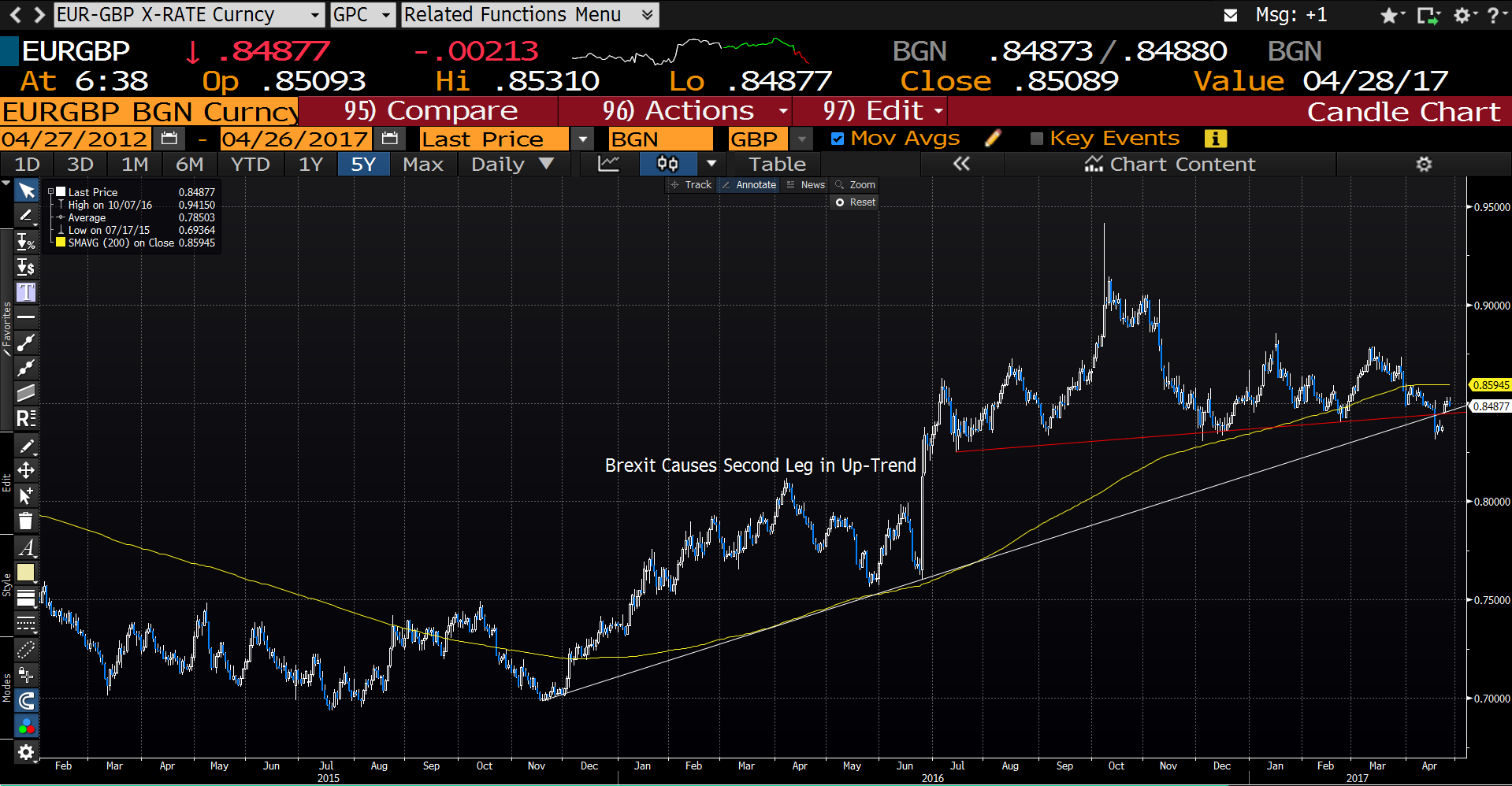by Pinchas Cohen

While both the euro and pound sterling seemed to have completed bullish reversals against the dollar, which currency—and perhaps region—would be a better bet? Perhaps now would be an appropriate time to pit the euro against the pound. In addition to determining which is likely to gain more vs the dollar, this could also be a good trade for dollar reflation hopefuls.
The year 2014 wasn’t kind to the European economy, for three reasons: Russia, deflation and stagnation. The EUR/GBP bottomed throughout most of 2015, but then started an uptrend that's been going on ever since. While Europe’s problems subsided, risk increased with Brexit, putting pressure on the pound.
Case in point, after reaching the 0.8000 level in early 2016, the EUR/GBP declined back toward 0.7500 as the Brexit referendum approached. The Brexit vote is what kicked-off a second leg for the rally.
However, upon nearing 0.9500, an almost 25% gain since the Brexit vote, the euro has been unable to hit new highs.
This could be because short-term focused investors have yet to see any long-lasting, bottom-line economic damage to the UK. Add to that the growing populist notion of the entire eurozone project coming into question—as the UK's 'Leave' sentiment seems to be spreading throughout Europe—and suddenly the UK doesn’t seem so risky any more, particularly when compared to the rest of Europe.
This was borne out in the past week when a possible win in France by far-right, anti-EU candidate Le Pen, compounded by a display of confidence by nominated, rather than elected, UK Prime Minister Theresa May called early elections, and the EUR/GBP was pushed below its uptrend line (white) for the first time since the end of 2014. In so doing, it also completed a top (red line). The pair had already fallen below the 200-day moving average (yellow) at the end of March, for the first time since this uptrend.
Of course, current investor sentiment that Le Pen is a goner, as polls hand the presidency to centrist Macron 2:1, pushed the pair back above both the uptrend line and the support of the 10-month top. However, the pair does not dare to approach the 200-day moving average, which looks right now like it's beating the pair over the head.
A decisive move above the 200dma, currently at 0.85946, or below its low beneath the uptrend line, at 0.83140, should signal whether it will go for a third leg within its uptrend, or perhaps plunge, potentially as far as the height of the top, between 0.95 and 0.85. The currency pair will provide hard numbers on who's ahead, the EU or the UK.
